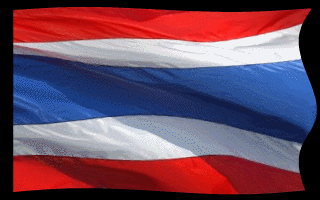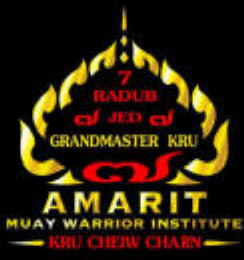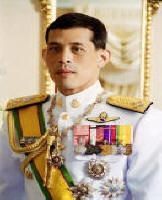HISTORY
MUAY
BORAN : WHAT IS TRUE?
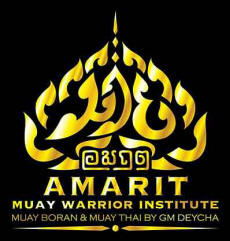
1. “Muay” is the martial art that Thai warriors have used since the ancient time.
The root of Thai nation was founded
approximately a thousand years ago (before
1238 A.D.).
At the time of its birth, there were many battle and feud with many empires near it. Battles back then were fought with melee weapons such as swords, rapiers, lance, spears, halberds, and other ancient weapons and were mostly scrambles. In order to emerge victorious, our ancestors invented the martial arts to be known as “Muay” to be taught to the warriors along with other weapon training, in the case they lose the weapons in a close quarter fight, they would still triumph over their opponents. The “Muay” art used in the ancient battlefield was much more efficient than Muay Thai due to much more array of forms, techniques, and parts being used (such as knuckles, feet, knees, and elbows) comparing to Muay Thai. The ancient art of Muay also focuses on mutilating or killing the opponents with technique known as “Toom Tubp Jubp Hak” (which is grabbing, depleting opponent’s strength or use it against your opponent, wrestling, toppling, pushing down, arm; leg; neck; finger; and wrist breaking, biting, clawing, clinching, stomping, head-butt, eye injuring, and groin attack). The technique itself has many variations which could be used situationally. (The “Toom Tubp Jubp Hak” is the most advanced technique of “Muay,” consisting of 65 techniques with almost infinite variations.
2.
The “Muay” martial arts, dating back to
the foundation of Thai nation a thousand
year ago is considered the root of
“Muay Kaad Chuek” “Muay Thai,” and
“Amateur Muay Thai” as the following
chart.

|
“Muay”
|
|
“Muay Kaad Chuek”
|
|
“Muay Thai”
|
|
“Amateur Muay Thai”
|
Some modern Thai people call “Muay” as “Muay Boran” or “Muay Thai Boran” (Boran means ancient) denoting that it precedes the current “Muay Kaad Chuek” “Muay Thai,” and “Amateur Muay Thai”. In this article, you might find assorted use of the words “Muay,” “Muay (Boran),” and “Muay Boran,” which should give you the idea that the art itself can be called with various name. However, it is the most correct to call it “Muay” since it is the name found in historical evidences.
4. “Muay Kaad Chuek”
is a martial sport derived from “Muay
(Boran). Therefore, the idea that “Muay
Kaad Chuek” is the same as “Muay
(Boran)” is a misconception. Historical
evidences clearly indicates the “Muay
Kaad Chuek” was developed from “Muay
(Boran).” There is also a false
assumption that there was no rule in
“Muay Kaad Chuek” due to the fact that
the official rules were not written in
the scriptures. Any rule for the “Muay
Kaad Chuek” would be mutually agreed
prior to the fight. One of the natural
prohibition for the sport is the full
pattern of Toom Tubp Jubp Hak,
preventing the fighters from breaking
arms, legs, neck, fingers, biting, eye
injuring, and making groin attack, since
“Muay Kaad Chuek” was considered a
festival entertainment and there was no
need to mutilate or kill any opponent.
There were rules
in “Muay Kaad Chuek” because it was a
cultural fighting sport in festivals.
There was no rule in “Muay (Boran)”
because it was a martial art meant for
battlefields.
In “Muay Kaad Chuek” fighters are
prohibited from mutilating or killing
the opponents.
In “Muay (Boran),” it is essential to
mutilate or kill the opponents since
failing to do so might cost life.
In “Muay Kaad Chuek”, fighters are
prohibited from breaking arms, legs,
necks, and fingers, biting, injuring
eyes, and doing groin attacks but there
is no rule in “Muay (Boran)” except for
the winner walks away alive.
The
word “Kaad Chuek” refers to the use of
rope or thread to wrap around the hands
and wrists (and sometimes up to the
elbows). The rope or thread being used
would be prepared by soaking with starch
gel or resin and leaving it to dry. The
prepared rope would be harder and allow
the fighters to hit harder. The harder
rope would also serve as guard against
the opponent’s attacks.
Sometimes,
The Kaad Chuek Fighter would coat their
wet rope with glass-like rubbles (there
was no glass in that age) before letting
them dry in order to infuse the knuckle
rope with the sharpness of the rubbles,
to further harm the opponents by drawing
blood. {Normally, the “Muay Kaad
Chuek”(The Kaad Chuek Fighter)
would use ordinary
rope but fighters who practice in the
occult as well would try their ability
by fighting with sharp ropes.}
5. Muay Thai is derived from “Muay (Boran)” and
“Muay Kaad Chuek”
6. “Amateur Muay Thai”
is derived from “Muay Thai”
7. Techniques used in “Muay Thai” and
“Amateur Muay Thai” is only a part (approximately
20 – 30%) of what was used in “Muay
(Boran).” (Continue
reading in Muay Thai: What is true?)
8.
“Muay (Boran)” does not use the main or
applied forms of Muay Thai since it
precedes and originates Muay Thai, not
vice versa.
“Muay (Boran) originated back in the
age when Thai nation formed (before
1238) while Muay Thai came into
existence in 1929. (Read
“History and Development from Muay to
Muay Thai”)
Any
acclaimed Muay master who teaches main
or applied forms of “Mae Mai Muay Thai”
and “Look Mai Muay Thai” as “Muay
(Boran)” is creating wrong understanding
of “Muay (Boran),” disregarding the
historical evidence of the development
of Muay.
9. “Muay(Boran)”
does not do “Wai Kru Ram Muay” because
there is no time to waste in the real
battlefield. It would only consist of
short chanting (Borrigumkatha) before
running at your opponents. Ancient Thai
warriors also train in
Jittanubhap,
which is an art of using the intensely
trained mind to control the body and
increase the efficiency in fighting.
There are many legends about it.
10.
The Wai Kru Ram Muay tradition
originated with “Muay Kaad Chuek” and
carried over to “Muay Thai”
11.
“Muay(Boran)” was not trained by kicking
banana trees:
There are
misconceptions about the training of
Muay warriors that they train by kicking
banana trees, which is outright false.
Imagine how many trees would be wasted,
whether the banana tree growth rate
would be sufficient or not, how many
acres of banana orchard it would take to
train a warrior for many years, how
kicking such soft trees would help a
warrior getting stronger, and most
importantly, how would ancient Thai
people would waste such useful plants?
Most parts of the trees could be used
one way or another, such as cooking,
making packages, and rolling sheet for
tobacco. Ancient Thai people would not
kick a banana tree except for the
children due to their reckless behaviors
but they would be scolded for it.
In real
Muay training, the masters would create
specific equipment from natural
materials. The younger trainee would
start with softer materials while the
full-fledged warriors would be trained
with harder equipment to improve
endurance and strength of their knuckles,
feet, knees, elbows, muscles, tendons,
and bones as well as their mastery and
agility in using Muay Weapons to the
optimum accuracy, power, and timing.
Some equipment
were designed to have moderate hardness
for punch, kick, push kick, knee and
elbow strike training with unprotected
body parts, while some are intentionally
designed to be very hard to further
train the warriors. There are also
training in
wrestling, scripted partner training,
sparring, training of the 65 positions
of Toom Tubp Jubp Hak
for the thorough
mastery in the infinite variations.
When using hard
equipment,
rope would be wrapped around the contact
parts of the training warrior to prevent
serious injury, which would halt the
training or, in worst case, render that
warrior incapable. It would then be
developed into the form of “Muay Kaad
Chuek” .
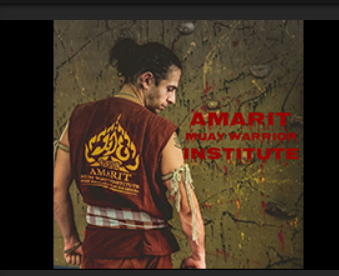
| "Muay(Boran)" is a martial
art which can be applied for
self defense, Muay Thai, K-1,
Kick Boxing, MMa and UFC. This
because "Muay(Boran)" uses
punches, feet, knees and elbows
similarly to Muay Thai but has
broader variety of basics
weapons skills and also has a
wider range of fighting methods,
patterns and techniques than
Muay Thai.
Therefore, using punches, feet, knees and elbows following "Muay(Boran) principles is much more dangerous and difficult to predict than Muay Thai. Furthermore, "Muay(Boran) has and advanced fighting techniques called "Toom Tubp Jubp Hak", wich makes "Muay(Boran)" much more effective than "Muay Thai"
|

|
For all
knowledge that I, GM Deycha,
have trained and hereby present |

|
Any knowledge
or information I, GM Deycha,
have said, written, taught, or
demonstrated, |
Muay Boran started way back in the medieval
ages when wars were fought with bows and
arrows, swords, and pikes. And in hand-to-hand
combat arms, legs, knees, and elbows were
also used as weapons.
This sport which was included in military
training was made famous by King Nareusan
1560 A.D.
During one of the many battles between Burma and Siam he was captured. The
Burmese knew of his prowess as the best
unarmed fighter in the realm and gave him a
chance to fight with their best for his
freedom.
Upon his return to Siam he was hailed as a hero and Siamese-style boxing,
as it was called then, was soon recognized
as a national sport. Boxing in this style
reached its zenith of popularity about two
hundred years ago, i.e., in the reign of
Prachao Sua (King Tiger), when it was
indulged in by all classes of the population.
From those days up until the early part of
this century, the fighters, particularly
those in provinces, used horsehide strips
and later help in lieu of gloves.
It was also a practice at one time to grind pieces of glass into the help
if both contestants agreed. Since these
practices were obviously dangerous to the
fighters' health, regular boxing gloves were
introduced about 50 years ago and have been
used ever since.
To the Thais, Muay Thai is regarded as a
prestigious national sport. Thai boys will
in one or another way, intentionally or
unintentionally, learn how to box Thai style.
Even Thai girls will know enough of the
basic principles and to be able to use it
for self-defense when necessary.
Muay Thai, called Thai Boxing by foreigners,
is our national sport and is now getting
more popular in many countries, especially
in Japan where a large numer of young
Japanese are now being trained to fight
professionally. But in Japan this fighting
is called "Kick Boxing."
At present "Kick Boxing" is internationally
known as a Japanese martial art. Surely the
true name, "Muay Thai" should be retained
internationally as the Japanese terms Kendo,
Judo, or Karate have been.
There is no [clear] evidence to show the
time of origin of Thai-Style boxing.
It can only be assumed that Thai boxing existed since the Thai emigrated
from the South of China. [Further
archaeological work needs to be done in this
area, both in the Thai and English languages.]
The [Tai tribe] immigrants had to hide from
attackers and met with resistance from local
people. In short, they had to fight
endlessly for their survival. By the time
they managed to settle in the "Gold
Promontory", the Thais had gone through to
countless battles and many lives had been
lost.
The ancient weapons consisted only of spears,
swords, pikes or bows and arrows. But in
hand-to-hand combat weapons become clumsy,
and elbows, knees, feet and fists became
more practical. This must have been
extremely successful, as it was then
developed into a form of martial arts used
in battle, and this was the origin of Muay
Thai.
When the Thais finally settled down and
built a city, and extended their territory
to become a large country, there was a need
for an army to defend the country. Soldiers
in those days had to learn Muay Thai along
with the use of traditional weapons.
Thus there was also the need for Kru Muay,
or teacher of Thai boxing. Various tactics
for attack and defense were developed,
called "boxing tactics". Later, laymen began
to take up this form of fighting, as a form
of self-defense, and as a handy
qualification to become a soldier, which
would also lead to further advancement
depending on their ability and talent.
During the Ayudhya period, which was a
period of consecutive fighting against the
neighboring countries of Burma, Cambodia and
Vietnam, history records state that King Sri
San Petch or Khun Luang Sorasak known as
Phra Chao Sua (The Tiger King) often boxed
incognito in various up-country temple fairs.
He is said to have been a skilled boxer, and enjoyed the sport so much
that he often disguised himself thus in
order to test his skill against villagers
and thus became quite a legend in his own
time.
When Ayudhya fell in 1767 A.D. many Thais
became prisoners of War. In 1774 the King of
Burma held a festival to celebrate the Chedi
containing the Bhuddha's relics in Rangoon,
with various forms of entertainment and
festivities. This included a boxing display
for the King by a Boxer named "Nai Khanom
Tom" a prisoner of war from Ayudhya. Pit
against Burmese boxers, Nai Khanom Tom
defeated 10 Burmese opponents in a row, and
also became quite a legend.
During the reign of King Tak Sin the Great,
the King had a close aid-de-amp named "Phraya
Pihai Dab Hak" who had studied the art of
Muay Thai with many famous teachers and
displayed his talent for the King.
As a result, he was chosen to become a
soldier, and was later promoted to the
position of Chao Muang (governor) with his
name recorded in history.
In the Ratanakosin Period, Muay Thai was
still a national art form, with competitions
in annual national festivities. Time-keeping
was done by floating a pierced coconut shell.
When the coconut sank, a drum would be
beaten to signal the end of a round.
In 1788, during the reign of King Rama I,
two french brothers arrived in Thailand by
boat, having defeated many boxers across the
Indo-China Penninsula.
King Rama I consulted the Crown Prince, his
brother, who offered to find boxers to fight
against the Frenchmen. Phraya Phra Klang
would accept the challenge, settling the bet
at 50 chang (4,000 bhat).
The Crown Prince chose a boxer named Muen
Plan of the Royal Guards. The match was held
in the grounds of the Grand Palace.
Muen Plan wore full battle regalia--bare-chested,
seeped in magic charms, cabalistic writing
and oils to ensure invulnerability. When the
fight began, the large French fighter tried
to attack, aiming for the neck and collar-bone.
Muen Plan defended himself with Muay Thai.
The other Frenchman, seeing his brother
making no progress became frustrated, and
pushed Muen Plan's back to stop him from
backing away.
Members of the Royal Guards saw this break
of boxing etiquette and proceeded to help
Muen Plan tackle the two Frenchmen until
they had to be carried back to the boat.
They set sail the next day, with no thought
of ever challenging a Thai Boxer again.
During the reign of King Rama V, Thai boxing
matches were widely popular, boxing matches
were held for the King's pleasure, ad
skilled boxers received titles from the King,
for example Muen Muay Mee Chue from Chaiya,
Muen Muay Man Mudh from Lopburi, Muen Cha-ngad
Cherng Chok from Korat.
Also in this period boxing camps were
established. Members of the royal family
sent out talent scouts to recruit potential
boxers from up-country and arranged matches
between camps. Winners would receive money
and valuable prizes. This period could be
called the Golden Age of Muay Thai.
During the reign of King Rama VI, Thai
boxing matches became more widespread.
Matches that used to be held in make-shift
rings in any available courtyard became a
standard raised ring surrounded by ropes.
The first ring was built in 1921 at Suan
Kularp field. Although standard rings were
available, boxers still bound their hands
with rope. Foreign boxers came to take on
Thai boxers. An important free-style match
took place between Young Harntalay and Chin
Chang from China which attracted a huge
crowd of spectators.
The result was that Young Harntalay floored
Ching Chang with a beautiful kick. In this
period, they also had referees in the ring,
and kept time by the clock.
These innovations were probably adopted from
abroad. Rope binding was needed until 1929
when boxing gloves took its place. Earlier
at the Lumpini Park Ring, a Filipino boxer
gave an international style boxing
exhibition with boxing gloves. Later, gloves
were also used in student boxing matches
called "Muay Farang", and in professional
international boxing between Thai and
foreign boxers. This led the organizers of
Thai-Style boxing to see that gloves are
less dangerous than rope-binding, and
decided that gloves should be adopted in
Muay Thai, but fighting with elbows, knees,
feet and fists would still be allowed.
Although many improvements or changes were
applied from the type of ring, breaking each
bout into rounds, using the minute-system of
time-keeping, and using gloves, one aspect
of Thai-style boxing remained the same--the
jock strap. Originally, the jock-strap
consisted of a triangular-shaped pillow tied
to the waist, with a strap tied behind from
between the legs. The pillows were red or
blue color according to the boxer's corner.
These pillows were used until one boxer went
to Malaysia and saw foreign boxers use jock-straps.
He brought the idea back to Thailand, and
since then jock-straps have replaced the
triangular pillows.
During the reign of King Rama VII, in the
revolutionary period, permanent boxing
stadiums were established both in Bangkok
and in the provinces.
They gradually disappeared in 1942 during
World War II. After the war, boxing stadiums
sprang up like mushrooms overnight. Skilled
boxers from up-country flocked to Bangkok to
take part in tournaments. Finally the first
standard boxing stadium was established--the
Rajdamnern Stadium, in 1945.
Rules were set, and later on regular bouts
were set at 5 rounds of 3 minutes each, with
a two-minute interval between rounds. The
weight was taken down in stones like race-horses,
and later converted into kilograms.
In the early days, the match-maker system
was used; the stadium officials would
organize matches providing cup or talent
jackets as prizes. Matches were not
classified into weight groups until many
years later when the pound system replaced
stones and kilograms. International names
were given for each weight group, such as
flyweight and bantamweight. Matches were
arranged to select a champion for each class,
following the international style.
Muay Thai is still developing, but what
remains unchanged is the use of the pipe and
drums as musical accompaniments for the
matches, and is considered a unique
characteristic of Muay Thai. Muay Thai has
been initiated under many names, which have
not received prolonged interest because the
original has already became known world-wide.
Many additions have been made to the
regulations of Muay Thai. It is forbidden
now to hit the private parts since this
technique has become quite infamous as a
form of attack and is considered debasing
for the fine art of Thai boxing. Muay Thai
remains a national art form. If all parties
concerned help to uplift and conserve this
form of martial arts, and pass it onto
following generations, it will remain a
valuable possession of the Thai nation.
Paak Tai - Southern Styles
Muay Chaiya
Muay Chaiya is the style of the South,
created in Chaiya city in the province of
Surathani in the South of Thailand. The
style was created by a soldier named Por Tan
Mar from Bangkok who eventually became a
monk in the temple of Wat Tung Jab Chang in
Chaiya city, where he remained until his
death.
It was during his monkhood that Ajarn Por
Tan Mar developed the Muay Chaiya style.
He taught the style to the governor of
Chaiya ("Praya Vajisata Ya Rat") named "Kam
Sriyaphai". The governor had a son called "Kiet
Sriyaphai" who learnt Muay Chaiya from his
father.
Kiet Sriyaphai also learnt other styles from
12 different Ajarn's. He was to become the
Master of Muay Chaiya.
The last Ajarn of Kiet Sriyaphai was the
famous Ajarn Kimsaing who was master of the
Paak Klang style.
One of the best students of Ajarn Kiet
Sriyaphai, Kruu Tong, has taught many Thai
people who are still living today.
It is believed that the style of Muay Chaiya
is more than 250 years old.
The Muay Chaiya stance is very low and
compact, with the center of gravity between
the legs. Both knees are bent and all the
joints are facing forward, ready to be used
as a shield against any incoming attack. In
Muay Chaiya, the fists are placed one higher
than the other, facing upwards. Proponents
of the style usually lead with the right
side of the body but can use both sides very
well.
Muay Chaiya specializes in blocking with the
elbows and knees. Every leg or arm is bent,
even when the boxer attacks. Limbs are never
extended completely. Some people call it the
"Durian Style", named after a fruit covered
in very sharp spikes.
The footwork is fast and smooth, and
sometimes the body weight is placed entirely
on one leg. The Muay Chaiya boxer often
moves in a springing motion. The attacks are
very quick and come as a series of machine-gun
like blows coming from all angles. Muay
Chaiya is considered by some teachers to be
a hybrid style. This is because the person
who developed the style, Ajarn Por Tan Mar,
brought the style from Bangkok.
The Muay Chaiya style was developed by a
monk, so the style carries many Buddhist
concepts amongst its teachings. The Muay
Chaiya boxers were trained in meditation and
the Thamma (teachings of the Buddha).
The Muay Chaiya boxers wrap only their hands
as they want make their primary weapon, the
elbow, as effective as possible.
Muay Maa Yang
Muay Maa Yang is another less well known
southern style of Muay Thai. The name "Maa
Yang" translated from Thai means "The
Horse's Walk". The master of this style was
called Kruu Tankee.
The classic stance of this style has the
boxer with one leg raised up in a guard
position, with the same hand held close to
the hip, the other hand in front of the face
also in a guard position.
Kruu Tankee was well known for his cruelty
whilst fighting, so was not a well liked
teacher. One story has Kruu Tankee removing
the eye of his opponent Kruu Noree (Muay
Chaiya Style) who broke Kruu Tankee's
forehead with a jumping kick. Kruu Noree
continued to fight after losing his eye, but
later died of a hemorrhage related to his
injuries.
Paak Eesaan (The eastern style of Muay Thai,
also known as Muay Korat)
Muay Korat is named after the place where
the style originated; Na Khorat Rachasima
which is located in the center of Thailand
towards the east. The style of Muay Korat
appears to the public around the time of
King Rama IV (date needed), but perhaps the
Korat people have had this style for more
than a thousand years.
The governor of the city of Na Khorat
Rachasima, Phra Hemsamahan was since we know
the transmitter of Muay Korat. Phra
Hensamahan teach the style to Deng
Thaiprasert who became the first fighter to
represent the Korat style fighting in front
of the King, and winning the competition
acquiring the title of "Muan Changat Cherng
Chok", meaning "The King's Champion".
Another student of the art, taught by Phra
Hemsamahan, was Kruu Bua Wathim. This is
considered the real master of the Muay Korat
system. Kruu Bua became a soldier and taught
cadets in the Army all his life. His real
name was Kruu Bua Ninarcha, meaning "The
Black Horse".
Muay Korat is considered to be the Muay Thai
of the East.
The stance in Muay Korat is quite different
from other styles. The stance is quite long
and very narrow with both feet almost in one
line, both pointing forward. The hands are
placed one in front of the other, lined up
together in front of the nose. The front, or
lead leg is straight and the knee is locked.
The back leg is also straight, tensed and
ready to kick upwards, or to use footwork to
change the angle against the opponent. The
back leg heel is also up off the floor. The
body's center of gravity is close to the
front leg with the head positioned over the
front foot, body leaning forward.
Muay Korat kicks and punches are completely
straight. The kick travels in an upwards arc,
twisting a little bit to reach your
opponents head or neck.
This style of Muay Thai prefers to intercept
an attack by simultaneous block and strike,
or to choose to evade an attack by moving
out of range. Rarely does the Korat style
teach students to block and then attack. The
kind of footwork used is "Suua Yang", which
means "Tiger Walk". These techniques are
closely guarded. The most powerful weapon in
Muay Korat is called "Viang Kwai", means "Swing
of the Buffalo". This technique is executed
after a kick and uses the knuckles to strike
the opponent behind the ear. Another famous
attack is called "Taa Krut" which is used as
a counter-attack, launching two strikes
simultaneously.
In ancient times, the boxers of Muay Korat
followed a Buddhist Code known as "Sin Haa",
the five precepts. Meditation was a very
important part of their training, followed
by a strong respect for seniors and the
golden rule of not to fight in the ring with
other Muay Korat boxers.
Paak Klang (The central style of Muay Thai,
also known as Bangkok Style)
Muay Paak Klang is the Bangkok or central
style. Perhaps Muay Lopburi was part of Muay
Paak Klang.
The master of this famous style was "Ajarn
Kimsaing" who was from Ayuthaya. Ajarn
Kimsaing learned Muay Ayuthaya from Kruu
Kiao. He then moved to Bangkok to study
international boxing and Muay Paak Klang
with "Luang Vitsam Darunkon".
The stance in Muay Paak Klang is not so wide.
The arms are held low and the fists are
clenched facing upwards. Both arms are
placed at the same height, parallel to each
other pointing forward, with the left hand
held forward slightly.
Sometimes the front foot is held off the
ground, extended outwards, but pointing down
towards the opponent. The footwork in this
style is very interesting; when the Muay
Paak Klang boxer steps, his feet come
together with his hands held in front of his
face in a high guard position, then the
boxer steps outward again, feet separating
and the guard lowering again.
The style is sometimes known as the "Ghost
steps" as Muay Paak Klang boxers move so
quickly and smoothly with little effort,
seemingly covering ground in many places at
the same time.
The master of this style, Ajarn Kimsaing was
the last Ajarn of the very famous teacher of
the Muay Chaiya style; Ajarn Kiet Sriyaphai.
Muay Paak Klang boxers wrap their hands down
to the middle of the forearm.
Paak Klang - Muay Lopburi
This style born in the Ayuthaya Period when
King Narai was on the throne. At this time a
lot of foreigners were working with the King,
so it is believed that Ajarn Muun Men Mat
learned deadly skills from them.
The typical stance of Muay Lopburi looks
almost identical to that of a western boxer
around the 1900's, the classic upright
stance with both arms extended outwards,
both forearms pointing forwards. This style
is based in very accurate and deadly punches.
The most dangerous weapons of Muay Lopburi
were the upper cuts to the opponents adam's
apple and the thumb strikes to the eyes.
This style was nominated as one of the most
clever and tricky styles of the era.
Sometimes the boxers would fake an injury
waiting for an opportunity to attack. Some
say that this style was part of another
style called "Muay Paak Klang" or the
central style.
Muay Lopburi wrapped the arm only halfway in
cotton twine, and sometimes no wraps were
used.
Sadly, this style has been lost completely.
The premier Ajarn (teacher) of this
dangerous style was called "Muun Men Mat",
meaning "Ten Thousand Accurate Punches".
Legend has it that Ajarn Muun Men Mat didn't
teach Thai people his art because in one of
his last fights he killed a man with a fatal
blow. After this he decided to stop teaching
and lived in a Buddhist Temple helping Monks.
This was in the Ayuthaya Period.
